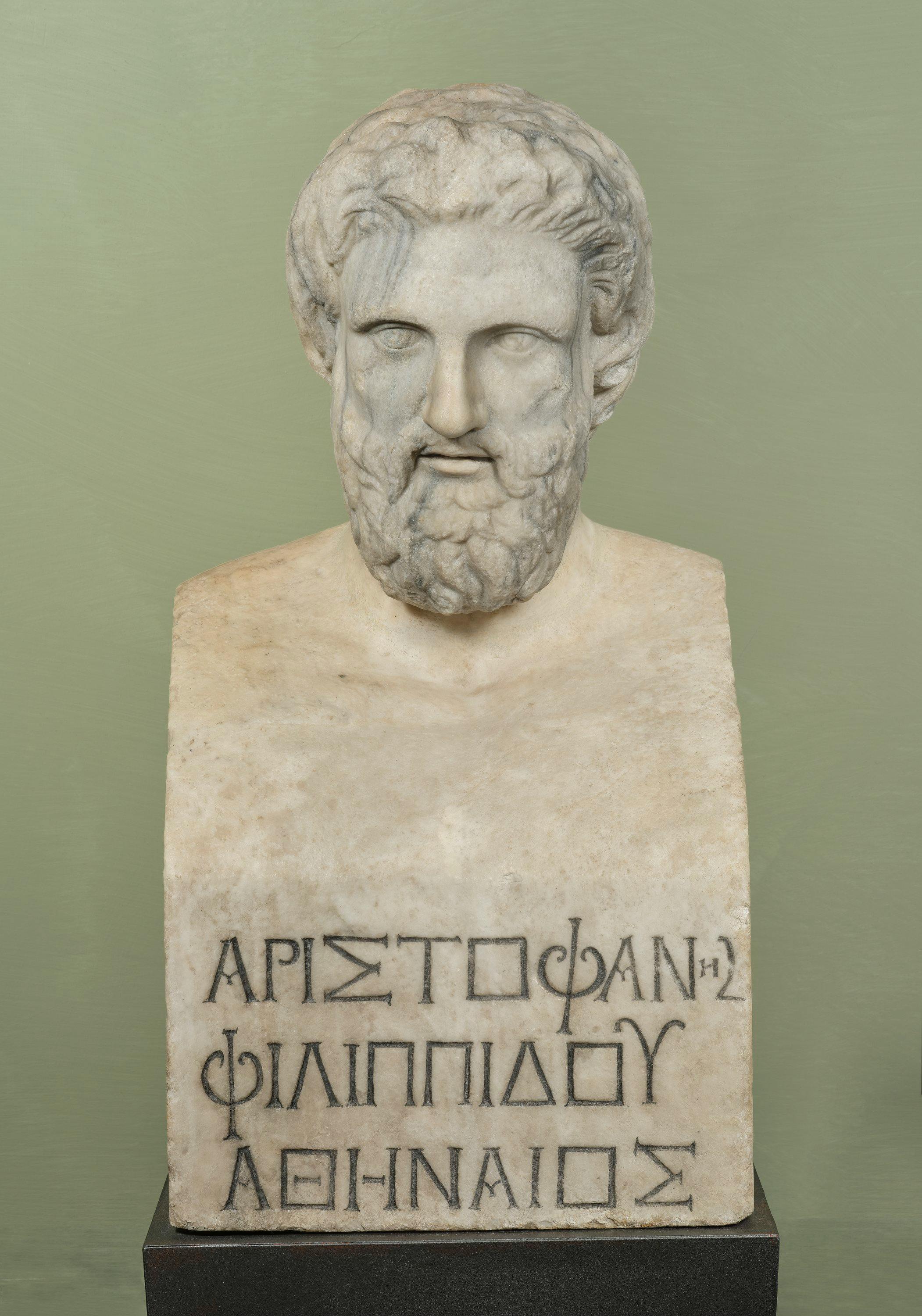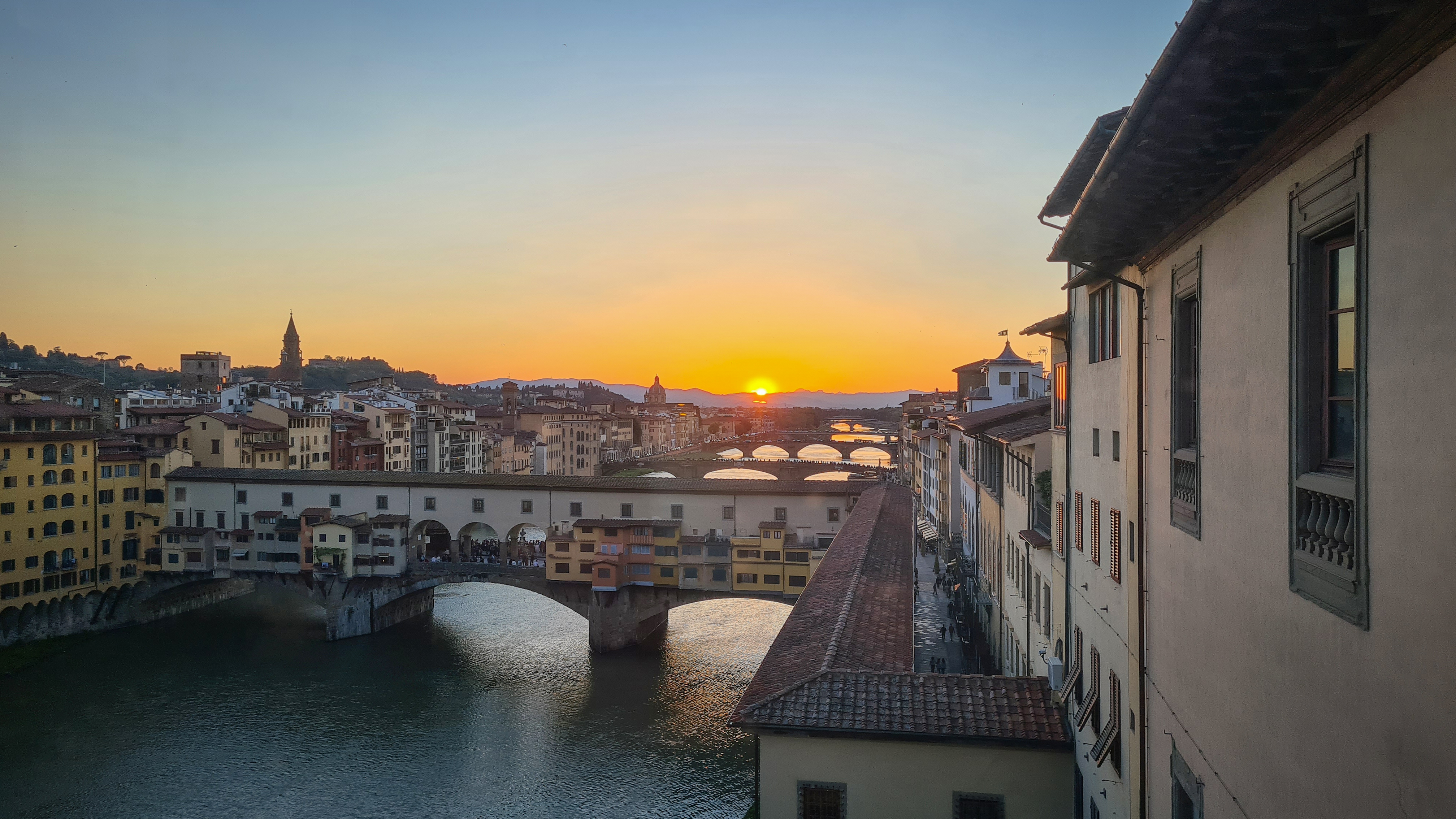Headless herma of Aristophanes with non-original head of an unknown person
Roman Art
The first information on the body of this herma dates back to the mid-16th century, but its provenance is controversial. The herma, which is still headless, was moved by Pope Julius III in the second half of the 16th century to his Roman villa in Via Flaminia, where it was displayed with the addition of a bearded head with long hair and central parting. The figure was lengthened and the statue was placed in the garden to support a pergola.
With the transfer of ownership of the vineyard where it was located, the work passed to the Medici and was moved to Florence in 1780 before entering the Gallery in 1784 (inv. no. 213). At the beginning of the 19th century, the head was replaced with the one we can admire today, which is also non-original, made with a different marble, and whose collecting history is unknown. There is a slight dimensional discrepancy between the width of the shoulders and the head. In addition, the modern assembly is slightly off-axis and leaning forward.
In the front side, the body bears a three-lines inscription that can be dated back to the middle of the 1st century A.D. due to its regular and even characters. The epigraph reads “Aristophanes, son of Pheidippides, Athenian”; however, as the name of Aristophanes' father was Philippos, it is assumed that there was an error on the part of the workshop.
The head depicts a bearded man with short, thick hair. The face has an elongated shape and is characterised by a wide forehead, which is marked by a horizontal and superficial wrinkle that suggests the advanced age of the protagonist. The brow ridge is well defined but hairless. The eyes are wide with marked iris and pelta-shaped pupils. The beard appears thick but is rendered with little volume. On the cheeks, the short and full curls are arranged in horizontal rows, with small engravings used to depict the locks by which they are formed. The locks are also slightly twisted on themselves and end with a thin curved tip. The horizontal positioning of the curls is repeated also on the chin, with an increase in length and volume from top to bottom. The moustache is long and falls to the sides of the thin and barely open mouth. The hair is rendered with short and wavy locks. In particular, the locks on the forehead open up and are directed outwards. In addition, on the right side of the head, the tip of each lock falls under the mass of the next one, thus giving volume and an overall orderly effect, while on the left side, the “bristly” aspect of the hair - here thickly engraved - is repeated up to the intersection with the beard. In contrast with the very detailed frontal locks, it can be observed that on the rest of the head the hair is rendered without as many details and by means of a lower relief, while maintaining the same wavy pattern. The locks falling on the nape of the neck have a curved hooked tip, while those on the ears are not visible.
The nose and lower lip are the result of restoration. The state of preservation is good but the marble is chipped in several areas of the face, while the locks of beard and hair have a deteriorated profile.
The style and workmanship of the head allow to make some hypotheses on the dating. In particular, the style of the face and the modelling of beard and hair, which were made without the use of a drill, suggest an early imperial date. However, the meticulousness with which the eyes were made, as well as the detail of the pronounced lacrimal duct, suggest a reworking in late antiquity, a practice that was widespread at the time. On this basis, it could be a head from the 1st century A.D. that was reworked around the 4th century to suit the taste of the time.
A.Ambrogi, Il reimpiego nella ritrattistica tardoantica. Sovrapposizione e/o sostituzione di immagini nella statuaria iconica di età costantiniana, in “Bollettino d’Arte”, 19 – 20, pp. 29 – 50, 2013; A. M. Nardon, Erma acefala di Aristofane con testa non pertinente di ignoto in Divina Simulacra. Capolavori di scultura classica della Galleria degli Uffizi, catalogo della mostra (Firenze, Gallerie degli Uffizi, 12 dicembre 2023 – 30 giugno 2024), a cura di F. Paolucci, pp. 74 – 75, Livorno, 2023, e bibliografia precedente

